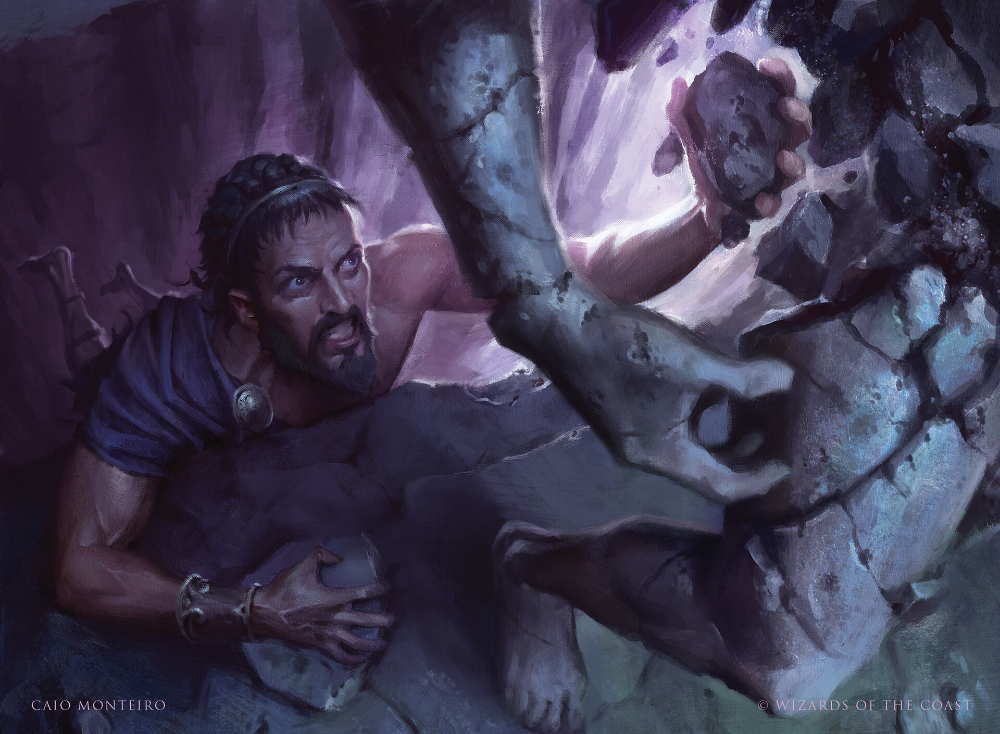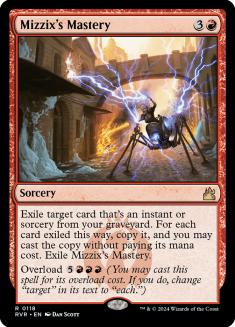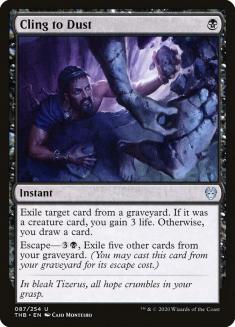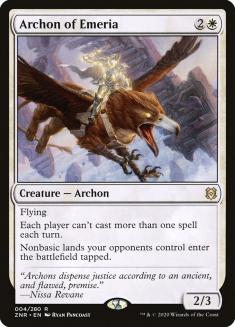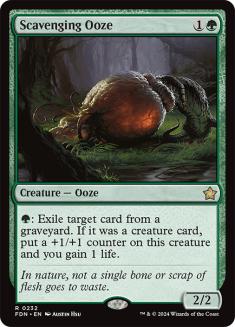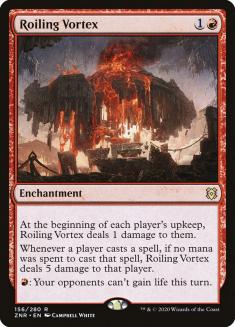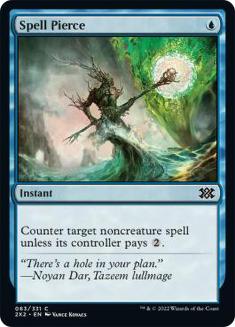Strixhaven’s Mystical Archive has created one of the largest shake ups in Historic thus far.
It would have made a lot of sense to bet on Brainstorm or Faithless Looting to be the largest catalysts for movement in the metagame, but as far as Week 1, it looks like a card I barely knew existed earns the top spot.
Luis Scott-Vargas, courtesy of Andrew Baekstrom, has been streaming this monstrosity:
Jeskai Emergent Ultimatum (lol) looks poised to be one of the strongest linear decks in the format, threatening Turn 4 kills through elaborate loops involving Unburial Rites or Mizzix’s Mastery to cast Emergent Ultimatum.
We’ve also seen considerable buzz surrounding Faithless Looting generally, with a lot of folks excited for the “return” of Izzet Phoenix — spoiler alert: pretty sure it still sucks. Regardless, there’s a large influx of degenerate combo and combo-slanted decks with the inclusion of cheap cantrips, enablers, and Mizzix’s Mastery into Historic. The format has changed considerably and will continue to evolve as the strongest linears are discovered and these combo packages get inserted into more strategies over time. It’s not your same old format, so here are some cards and decks that should be on your radar.
1. Cling to Dust
There are a bevy of graveyard interactions already littered throughout Historic, and Cling to Dust is one of the lowest-opportunity-cost ways to put graveyard hate in your deck. Its floor is extremely high as a cantrip, and it can even give your deck multiple angles — the ability to get out of range of aggressive decks’ reach, and have an inefficient card advantage engine. At a glance, the most impressive user of Cling to Dust is Rakdos Arcanist (Lurrus).
Creatures (15)
Lands (18)
Spells (27)

It’s probably no surprise that I would suggest Rakdos Arcanist as one of the front-runners in this new format, but the devil is in the details. No Death’s Shadow — weird after I suggested how powerful it might be for mitigating the deck’s weaknesses just a few short weeks ago, right?
Inquisition of Kozilek does a ton of work for the archetype, giving you considerable more redundancy on disruptive draws that snowball with Dreadhorde Arcanist, but also considerably powering up Young Pyromancer, to the point where I feel comfortable playing the full four copies. Cling to Dust also supports the powerful Shaman, and as the format becomes less about creatures, it’s easier to maximize the disruptive potential of the strategy while putting a ton of pressure on opponents.
As always, this deck’s details are hard to work out, but I’m very happy with this decklist so far and am pleased by how Cling to Dust has been cleaning up all the pesky Ultimatum and Phoenix players.
2. Archon of Emeria
Archon of Emeria is poised to feast on decks looking to get leaner, include a bunch of cheap cantrips, and go as linear as possible. It naturally stops Emergent Ultimatum and essentially everything that the Mizzix’s Mastery decks are attempting to do, as well as heavily stunting the development of just about every deck in Historic (nearly all of them are trying to leverage extremely explosive turns). The fact that it can stymie their mana development is the cherry on top.
The difficult question is, what kind of deck would want Archon of Emeria? On its face, it’s a bit of an underpowered card, and the traditionally popular white aggressive deck is Orzhov Auras, which both needs to cast a ton of cards itself and is a Lurrus strategy.
Does Mono-White Aggro finally have the tools that it needs to be successful in Historic as well?
Creatures (31)
- 4 Thalia, Guardian of Thraben
- 4 Thraben Inspector
- 3 Dauntless Bodyguard
- 4 Venerated Loxodon
- 2 Giant Killer
- 4 Selfless Savior
- 4 Skyclave Apparition
- 2 Archon of Emeria
- 4 Luminarch Aspirant
Lands (22)
Spells (7)

I’m quite happy with the spread of disruptive and individually powerful cards that this deck has. Thalia, Guardian of Thraben has been desperate for a home ever since her inclusion in a Historic Anthology, and I don’t need to inform you how strong Skyclave Apparition is.
The other big win here is Mana Tithe. Seemingly innocuous, Mana Tithe is a huge swing against the strategies that so often have their eggs in a single basket — whether it’s Collected Company or Emergent Ultimatum.
White’s sideboard options are also top-notch, and it’s easy to cover a wide swath of strategies. You also get to play Thraben Inspector, and Luminarch Aspirant is the Inspector’s best friend.
3. Scavenging Ooze
You should be playing more Scavenging Ooze, whether it’s going in Gruul Aggro, Selesnya Company, or (if you’re interested in getting frisky) Golgari Energy.
Creatures (25)
- 4 Scavenging Ooze
- 3 Verdurous Gearhulk
- 4 Longtusk Cub
- 4 Winding Constrictor
- 2 Rishkar, Peema Renegade
- 4 Glint-Sleeve Siphoner
- 4 Stonecoil Serpent
Lands (19)
Spells (16)

Having access to the combination of Thoughtseize and Inquisition of Kozilek made me want to build a traditional Jund or Golgari Midrange-style deck. Unfortunately, the individual threats just still aren’t up to snuff in Historic after Scavenging Ooze. To support that level of disruption, you badly need a way to get aggressive and end the game in a hurry. While Longtusk Cub isn’t exactly Tarmogoyf, I’m pleased with the aggressive stance that this Energy deck can take.
This deck isn’t exactly new. Golgari Energy was a fine deck in its Standard era, but it was more reliant on building larger battlefields without access to the one-mana hand disruption and we are sorely lacking Walking Ballista as the de facto best handler of +1/+1 counters.
Regardless, this is a fine Scavenging Ooze deck. Ooze wants to play interactive games and Golgari Energy and many other Historic decks are capable of doing that. The stock of the powerful green two-drop has risen considerably, and you need good reason to not at least play a few copies in whatever green creature deck you’re choosing to pilot.
4. Roiling Vortex
Nice Emergent Ultimatum. Light ’em up.
Creatures (24)
- 1 Grim Lavamancer
- 4 Bomat Courier
- 1 Kari Zev, Skyship Raider
- 2 Hazoret the Fervent
- 4 Soul-Scar Mage
- 4 Rampaging Ferocidon
- 4 Viashino Pyromancer
- 4 Bonecrusher Giant
Lands (22)
Spells (14)

Oddly, Mono-Red Aggro❄ is one of the most underrated decks in Historic. It naturally has a ton of interaction for creature decks; has plenty of card advantage and reach elements between Light Up the Stage, Hazoret the Fervent, and its powerful manabase; and even has backdoor hate options with Rampaging Ferocidon and Roiling Vortex headlining its sideboard.
It can even play a reasonable control game after sideboard given the powerful hate options, as well as Chandra, Torch of Defiance. Many decks have a difficult time trying to sidestep your planeswalker and creature-land plan when their best sideboard cards are simple spot removal.
As for Roiling Vortex specifically, it’s certainly excellent against the aforementioned Ultimatum, but can even be used as a hate option against Dreadhorde Arcanist or beat up on Selesnya Company and their heavily lifegain-based plan of attack.
Regardless, if you’re Mono-Red, Gruul, or anything red and aggressively slanted, Vortex should be an important part of your sideboard plans these days.
5. Spell Pierce
While Historic has been creature-heavy for a while now, even those strategies are often playing Collected Company. As the format becomes more about cheap cantrips and huge spells, the stocks of Spell Pierce and the associated tempo decks that play it are only going to rise.
Creatures (22)
- 4 Rattlechains
- 2 Nebelgast Herald
- 4 Supreme Phantom
- 4 Spectral Sailor
- 4 Brazen Borrower
- 4 Ascendant Spirit
Lands (20)
Spells (18)

I can’t find a real flaw with Jose’s deck, although I’d probably throw in my customary additional land. It’s a great deck to feature Spell Pierce and also to highlight a way to attack the new Historic metagame as it evolves in the coming weeks. Mono-blue strategies are extremely punishing to those who don’t have them on the radar and can feast on linears that are reliant on resolving a handful of specific spells.
Historic is in a wacky, exciting space right now. The power of cards available to us to put in our decks is off the charts, so don’t be the person losing to Mizzix’s Mastery right now. You have an abundance of tools available to fight back against the Mystical Archive of Strixhaven.

